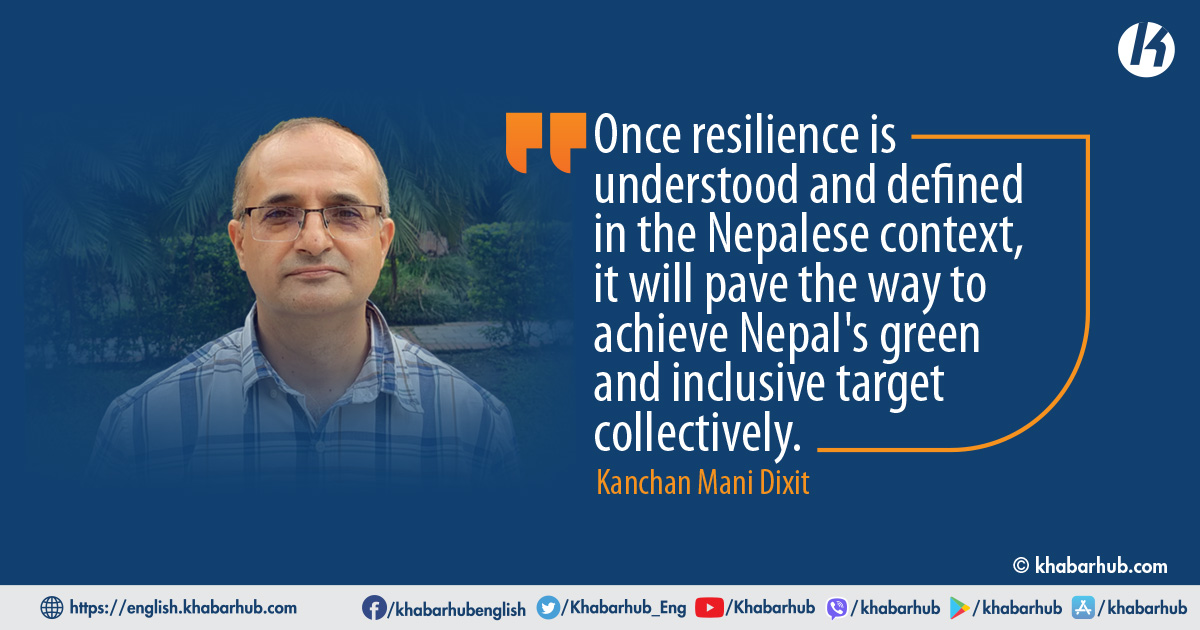On March 23, 2022, UN Secretary-General António Guterres set a target to protect everyone on Earth with early warning systems against increasing extreme weather and climate change.
He emphasized the urgent need to invest equally in adaptation and resilience.
With the 2023 COP28 at the doorstep, governments worldwide are preparing their development planning to be compatible with climate change.
The IPCC has already mentioned that climate change is occurring due to anthropogenic causes, and reducing emissions is one of the major interventions to slow it down.
Being one of the countries vulnerable to climate change impacts, it is critical for Nepal to build resilience to cope with extreme events.
People in urban and rural Nepal already face the ill effects of climate change in the form of forest fires, droughts, heat, floods, landslides, and epidemics.
Fragmented policies, bad governance, and lack of accountability have compounded vulnerability to climate change impacts.
It is, therefore, imperative to integrate resilience-building into Nepal’s development plan, policies, and strategies.
The term Resilience (उत्थानशिल in the Nepali language) has different interpretations among people.
For instance, people usually visualize resilience with a metal coil spring that, when compressed and released, returns to its original position.
In a small survey I conducted on social media, it was exciting to learn that people perceive resilience in various ways.
The responses were overwhelming and thought-provoking. People view resilience as the power of nature, dharma, women, self-motivation, mother nature, lessons learned from life experiences, the ability to live and survive peacefully in chaotic and anarchic situations, bounce back, and illusions.
Once resilience is understood and defined in the Nepalese context, it will pave the way to achieve Nepal’s green and inclusive target collectively.
Others see it as a process and outcome of successfully adapting to difficult and challenging experiences.
The responses from the survey suggest that most people perceive resilience as the ability to bounce back to the original situation or even better than the original situation, even though respondents have used different terminologies.
For instance, some respondents mentioned women, mothers, and nature as symbols of resilience.
They have viewed these entities as symbols because women, nature, or mothers absorb tremendous stresses and bounce back to function normally without compromising the service they provide.
Though heavily compromised and destroyed to improve human life, nature never denies the services it provides to human beings.
We still get oxygen, light, water, and food from nature despite these being polluted and destroyed.
Nature possesses a system to build resilience at its own pace. Similarly, women are sometimes called “Deity (Devi)” the incarnation of Durga herself, because they possess thousands of invisible hands to work for the betterment of their family and society while absorbing tons of stress.
Other synonyms of resilience used are self-motivation, lesson learned, and ability to survive, indicating ways to revert to the original state from the stress or problem.
One respondent viewed resilience as a hypothetical term because she thinks bouncing back to the original state after stressful havoc in all aspects of physical, biological, economic, social, and cultural is impossible to achieve, while another respondent views it as an illusion.
If resilience is perceived and understood differently among people, as outlined above, what does it mean in the context of climate change?
Since climate change today is everyone’s concern, it is now beyond the issues of the scientific community. Policymakers, teachers, professors, development workers, private sectors, communities, and students are equally concerned.
About a few decades ago, we believed that climate change would happen and we would be impacted seriously.
The phrase “would happen” has now changed to “is happening”. Climate change is no longer a future threat but a present reality.
The extremely hot and uncomfortable summer nights in Nepal in 2023 were examples of climate change actually happening.
We see its impact everywhere, whether it be a European heat wave, forest fires in Canada, or floods and landslides in South Asia, impacting the livelihood of millions of people.
As the General Secretary has emphasized the need to invest in developing adaptation and resilience, the country should explore all possible ways to understand the nuances of resilience and what it means to its people.
In a broader term, resilience is understood as bouncing back after being hit hard by climate change impacts.
In fact, it should bounce back and move forward like the metal coil spring jumps a little from its position when released, signifying it can do better than returning to its original position.
For planning, understanding resilience suitable for our country and people is required.
This process should involve a series of dialogues among civil society actors, development workers, women groups, community people, and local and national governments.
No one should be left behind in such dialogues. As people have visualized different meanings of resilience in the survey, the definition of which should go beyond returning to its original position because most of the population is already poor, marginalized, and vulnerable.
Reverting to the same position would not work.
Their capacity, thus, needs to be built, and they need to be empowered to bounce forward.
Communities should be provided with tools and techniques to deal with the ill effects of climate change, reduce such impacts, and do better than before.
Furthermore, organizing meetings, workshops, talk programs, and community-level events can open the avenue to understanding resilience better.
Once resilience is understood and defined in the Nepalese context, it will pave the way to achieve Nepal’s green and inclusive target collectively.









Comment